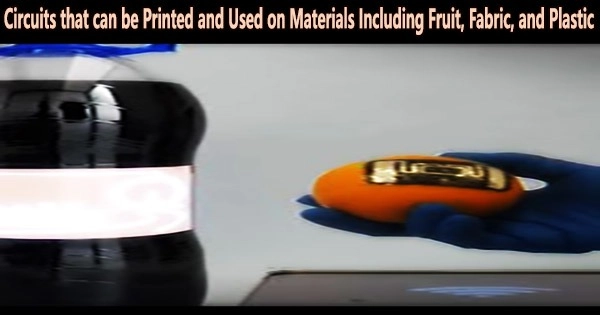Remember iron-on decals? All you had to do was use a home printer and special paper to print something, then use an iron to transfer it to a T-shirt. Scientists have now created a very similar method, although it prints circuits rather than images or logos.
The technique can print functioning circuits onto a variety of objects, including ukuleles and teacups, as described in ACS Applied Materials & Interfaces. Circuit boards that manage electronics are developing at the same rate as electronics themselves. Today’s boards are typically robust and constructed with strong fiberglass backings.
Electronics must be flexible because they are integrated into floppy and pliable objects, such as clothing and soft robots. A specific alloy of gallium metal that is a liquid at ambient temperature is frequently used in liquid metal circuits as a result of this, which has raised interest in them.
These gadgets can be created by printing them out using a modified inkjet or 3D printer. However, these procedures call for time-consuming steps and expensive machinery, making the finished products pricey and unsuited for mass production.
To make the fabrication process quicker, easier, and cheaper, Xian Huang and colleagues wanted to develop a method of creating liquid metal circuitry using a desktop laser printer that could place the electronics onto many types of surfaces.
The researchers used a regular laser printer to print a connected design onto heat-transferrable thermal paper to generate the circuits. The glass pane was transferred to by heating the carbon-based toner that had been applied by the printer.
Between the carbon and the liquid metal, the toner patterns roughened the surface and generated a hydrophobic air gap. The electronic ink-based pattern only attached to the exposed portions of the surface as a result, preventing the metal from sticking when it was brushed on top.
Then, this circuit might be directly adhered to a flat surface, like a plastic soda bottle. The device was initially placed on a piece of flexible plastic, then onto a rougher surface, if the surface was too uneven, like the bumpy orange skin.
The basic electronics, however, all worked as intended on the various substrates to which they were connected, from picture display to RFID tagging to temperature and sound detection. According to the experts, this procedure ought to significantly increase the applications for liquid metal circuits.
The authors acknowledge funding from the Key Research and Development Program of Zhejiang Province and the National Natural Science Foundation of China.





